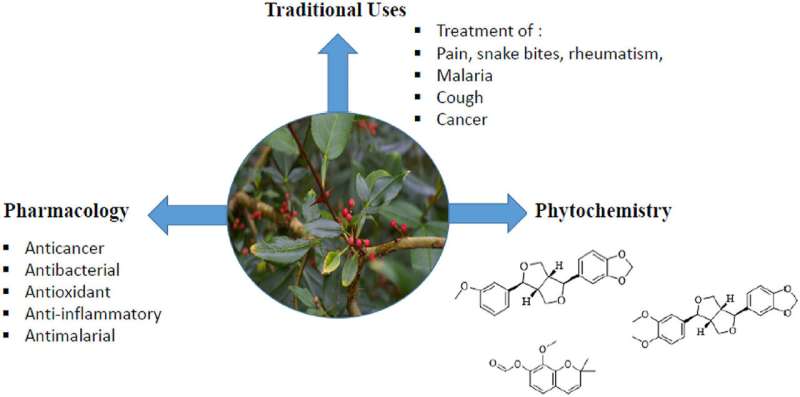This article has been reviewed according to Science X's editorial process and policies. Editors have highlighted the following attributes while ensuring the content's credibility:
fact-checked
peer-reviewed publication
trusted source
proofread
Researchers update ethnobotanical uses, phytochemistry and pharmacology of genus Zanthoxylum

Plants have been used since time immemorial in different parts of the world for the treatment and management of various diseases. Zanthoxylum is an important genus in many cultures around the world and is widely used in Asia, Africa, and America as a source of food, medicine, construction, and has many other uses including industrial applications.
Researchers from the Wuhan Botanical Garden of the Chinese Academy of Sciences (CAS) conducted an updated and critical assessment of the ethnobotanical uses, phytochemistry, pharmacology and clinical trials of the Zanthoxylum species to explore their therapeutic potential and identify gaps for future research opportunities. The review paper entitled "Ethnobotanical Uses, Phytochemistry and Pharmacology of Pantropical Genus Zanthoxylum L. (Rutaceae): An update" was published in the Journal of Ethnopharmacology.
They reviewed research articles related to this genus published from 1966 to 2021, obtaining a total of approximately 270 published papers. Other databases used to gather information on this genus were Sci-Finder, Google Scholar, and PubMed. The China National Knowledge Infrastructure database was also used to collect Chinese literature. World Flora Online was used to check the botanical names of this genus, while ChemDraw was used to draw the chemical compounds.
Results show that about 48 species of this genus are used in folk medicine for the treatment and management of various diseases, such as inflammatory diseases, cardiovascular diseases, rheumatism, bacterial diseases, metabolic diseases, reproductive diseases, skin diseases, cancer and others.
Trees of this genus are also used for construction purposes and others have industrial applications in cosmetics and paper making, as well as being used as a source of food. Several compounds have been identified from this genus such as alkaloids, coumarins, flavonoids, lignans, amides, fatty acids, alcohols among others.
Moreover, some of these compounds, fractions and crude extracts are associated with the pharmacological activities of this genus, including anti-cancer and cytotoxic, anti-malarial, anti-sickling, hepatoprotective, anti-inflammatory, anti-microbial, anti-oxidant, anti-parasitic, anti-convulsant and many others. However, despite the wide use of this genus, some of its species have not been studied for their traditional uses, phytochemistry and pharmacology.
In addition, some species of this genus are endangered, critically endangered and some are threatened due to the clearance of the land for agriculture, while others are overharvested, putting them at risk of extinction.
It has prospects for future drug discovery and thus extensive research work is required on its underexplored species. Strict conservation measures are also needed to prevent the extinction of some useful plants of this genus.
More information: Elizabeth Syowai Mutinda et al, Ethnobotanical uses, phytochemistry and pharmacology of pantropical genus Zanthoxylum L. (Rutaceae): An update, Journal of Ethnopharmacology (2022). DOI: 10.1016/j.jep.2022.115895
Journal information: Journal of Ethnopharmacology
Provided by Chinese Academy of Sciences




















